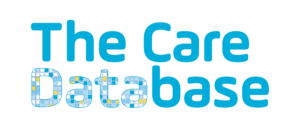The Care Database: Transparity take on the role of outsourced IT development
- 250+
- App Innovation
- Healthcare

About The Care Database
Chase Hospice Trading (CHT) are the owners of The Care Database, a web-based hospice management software package. There are currently thirteen hospice organisations across the UK that use The Care Database and this number continues to grow.
The challenge
The Care Database was initially implemented in CHT’s hospices – Shooting Star Hospices in April 2017. It was then made available for purchase by other organisations from January 2018 and twelve organisations have taken it up to date.
Having completed the initial development of the Care Database and with the application stable, CHT was looking to change partners for long-term support and enhancement development of the system. In particular:
- A fixed price support agreement with bug fixes to agreed service levels
- Ongoing maintenance to ensure the system remains secure and optimized
- Fixed-price development services to enhance The Care Database
The solution
The first stage of taking over management of the Care Database Application was:
- Transitioning the source code into GIT Repos in Azure DevOps
- Creating a backlog of issues and new features in Azure DevOps
- Carrying out a thorough review of the Web App and SQL source code
- Making some selected code changes and ensuring these could be successfully be deployed to TEST and then LIVE
- Ensuring that CHT knew how to operate the Transparity online service desk for raising tickets
Having successfully taken over management of the system, routine support could begin
The next stage was to look at how to improve the way the system is supported and developed by doing the following tasks. Each of these were specified and estimated as a new piece of work:
- Change the system so that the Web App and API work on Azure App Services (instead of IIS in a Virtual Machine (VM) per client) and then migrate all of the clients over to App Services
- Introduce fully automated deployment pipelines to ensure releases from DEV to TEST to UAT and LIVE servers are fast and robust
- For new features, introduce a new form of automated UI/Integration test that operates directly against the browser, in the same way a user does. These tests are based on Specflow and Selenium and are defined in Gherkin syntax. An example of which is shown below:
Feature: Roster a staff member
Background:
Given I have logged into and browsed to Roster page
Scenario: Find a roster slot that is unallocated that needs allocating
Given I have selected a roster slot
When I associate a staff member that is free and has the required skills
Then the roster is updated with the matching staff member
The outcome
We are now successfully managing the Care Database Application, have a fixed a number of critical issues and have resolved several performance problems.
We are currently implementing an extension to the system that will allow it to obtain patient records directly from the NHS over a Health and Social Care Network (HSCN) gateway.
"We have a large and complex healthcare management system called The Care Database. We moved our development and support to Transparity at the beginning of the year and they rapidly picked up our existing code and familiarised themselves with our product. We have noticed a dramatic improvement in our development speed and the quality of work is high. This is due to the direct communication we have with their developers to discuss and solve problems. We look forward to continuing to work with Transparity and continuing to grow and improve our Care Database.."
Tom Bradley - Director of Operations
